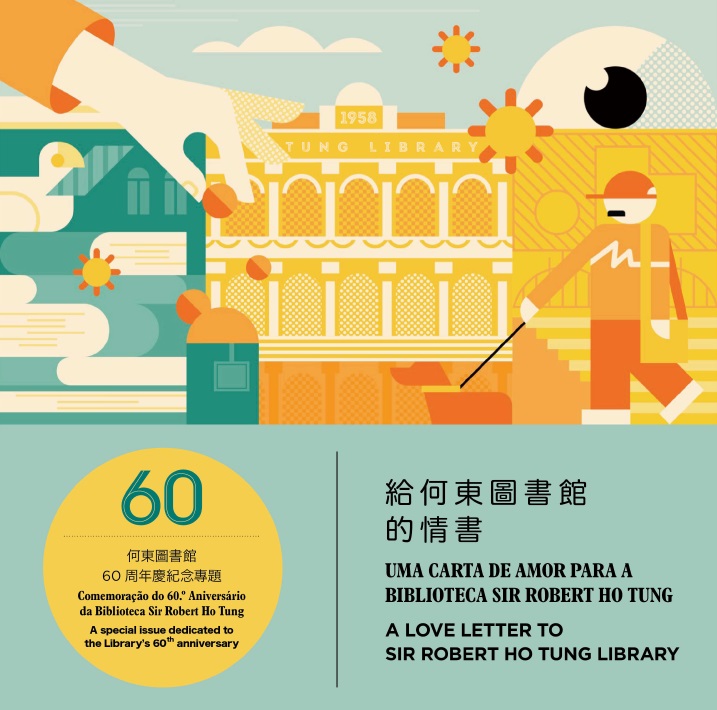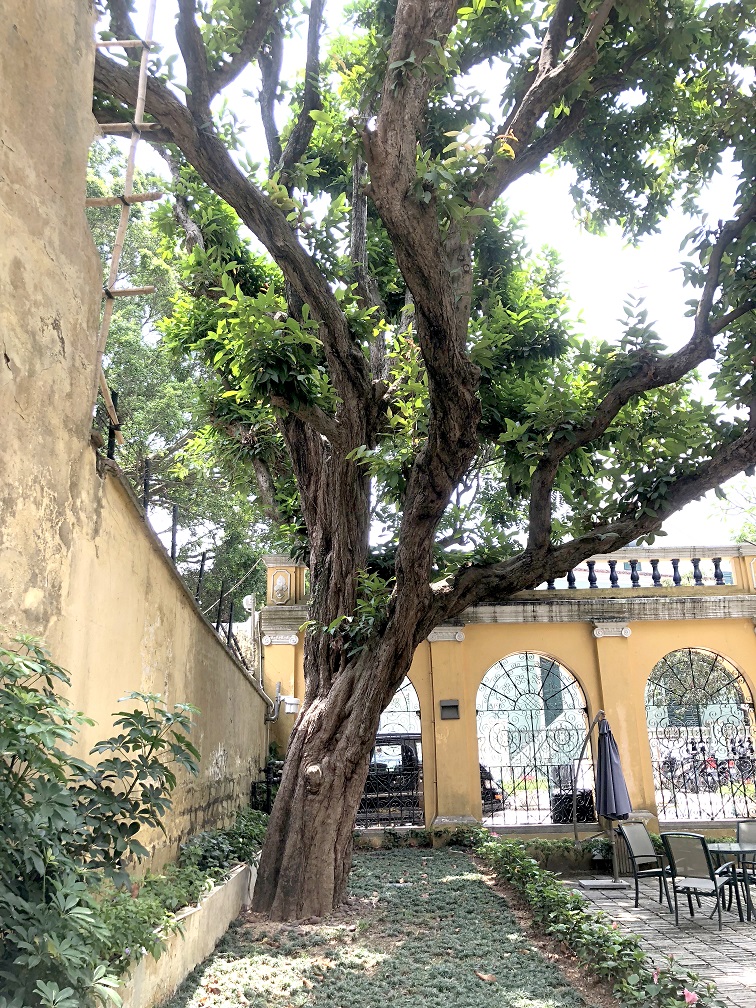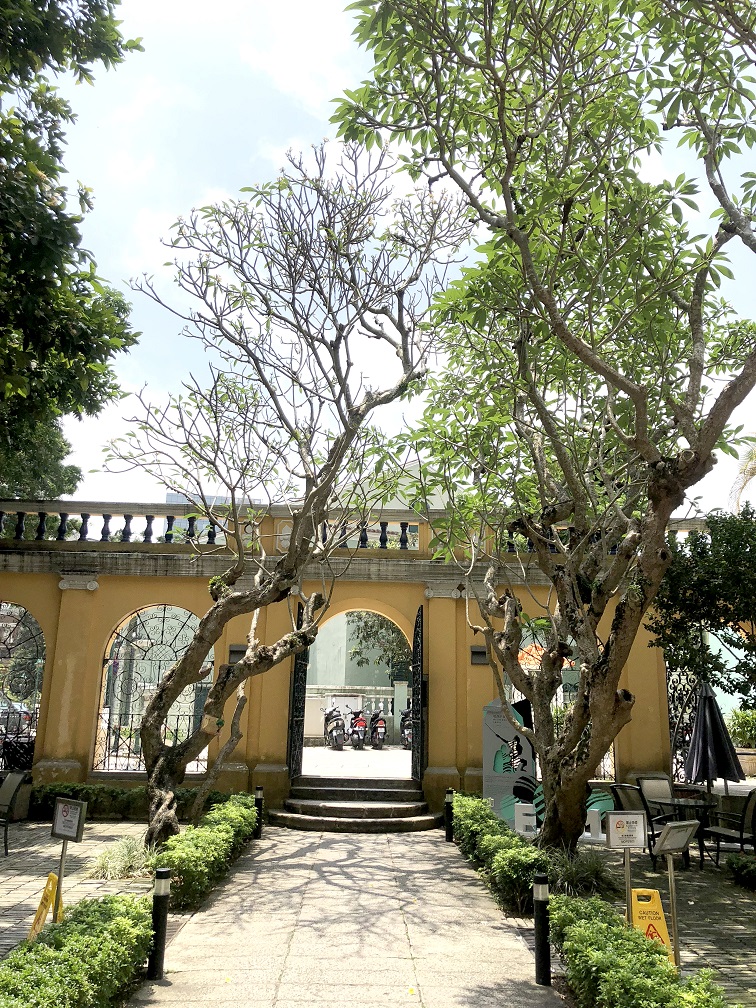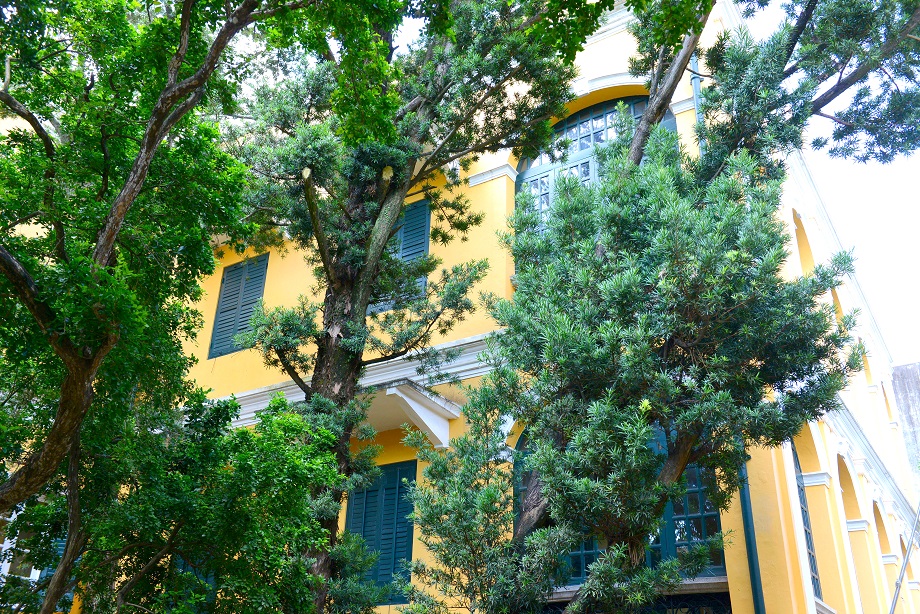A renowned architect of Macao and a representative figure of local Macanese community, Carlos Marreiros is among those who have drawn the highs and lows of Macao landscape and witnessed the various changes in the urban architecture before and after the Handover. As for the old building of Sir Robert Ho Tung Library, Marreiros finds the most noteworthy part is the neo-classical façade featuring a veranda with side arches, which is an essential element added to the building deliberately by the original architect in the 19th century. The arcade veranda was built for air circulation in such a sub-tropical city, and the arched windows behind open up to form an ‘environmental-friendly air conditioner’, effectively controlling the room temperature at around 21ºC. The arches which are decorated with mountain and floral patterns on the top suggest the Art Deco style of the building. In Marreiros’ view, Sir Robert Ho Tung Library is a very typical building of Macao local style, with many of the construction materials sought locally, including granite, a very common type of rock which serves as the alternative of limestone in Portuguese buildings. The original architecture was constructed with the design of a traditional Chinese courtyard before the addition of the arcade corridor, which reflects the fusion of the East and the West. He joined hands with Francisco Figueira, a late architectural giant of Macao and the first Head of the Cultural Heritage Department of the Cultural Affairs Bureau, in the building renovation and interior furniture design afterwards. At that moment they retained the original appearance of the architecture to a great extent without tearing down the old city wall inside, and they also temporarily built a colourful tin-sheeted South-European style storeroom in the backyard (which has been demolished already).
It was in as early as the 1980s that Sir Robert Ho Tung Library appeared to the public as the first cultural hub of Macao. Several small cultural performances, including that of notable Portuguese pianist Maria João Pires, were held on the 100-seat third floor. Membership was applied to the library covering the first and second floors in the early times of its establishment. When Marreiros was still a secondary-school student, he had a thirst for knowledge but found it hard to buy in Macao books written in foreign languages, especially those in the fields of art, philosophy and architecture, and then a coincidence happened: Dr. Túlio Lopes Tomás, principal of the secondary school Liceu de Macau and former Education Bureau Director, recommended Sir Robert Ho Tung Library to him. In the Library, the rich collection in Portuguese, English and other foreign languages (Portugal sent to the colonial library) has broadened his horizons and introduced to him a number of interesting friends, such as Americans who were learning acupuncture in Macao and Russians who taught Latin.
The public perception of beauty keeps changing over time. By combining the old and the new elements, Sir Robert Ho Tung Library has survived the constant changes of society and stands out with its timeless appearance over 60 years. As mentioned by Carlos Marreiros the architect in the interview, the incomparable beauty of traditional architecture owes to its long history, which does not exist in its imitated counterparts.














